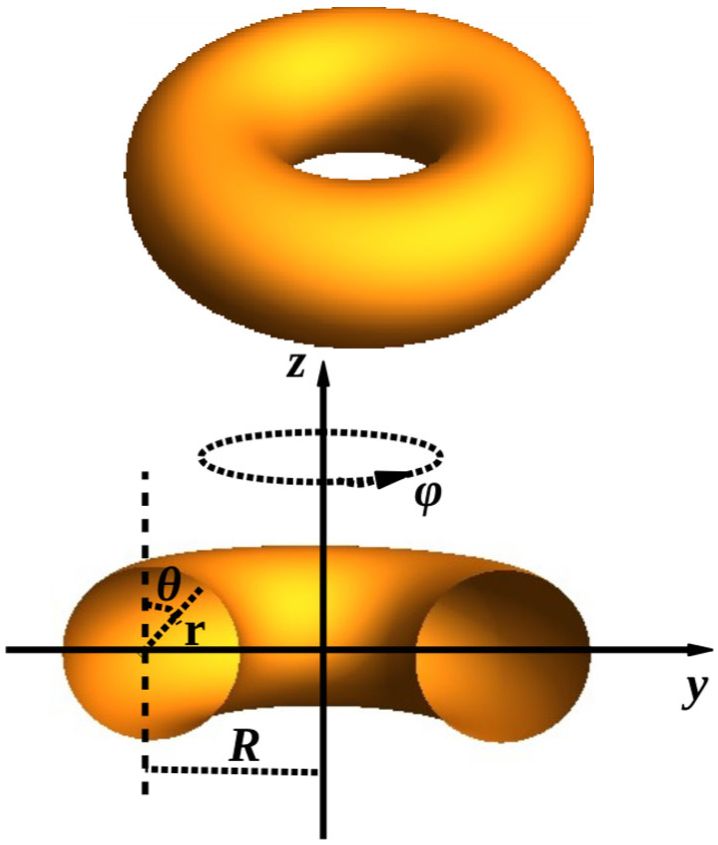EPJ B Highlight - Surprising qualities of insulator ring surfaces
- Details
- Published on 22 June 2016

Surface phenomena in ring-shaped topological insulators are just as controllable as those in spheres made of the same material
Topological insulators behave like insulators at their core and allow good conductivity on their surface. They owe their characteristics to a new quantum state within the material discovered in 2007 and 2009 for 2D and 3D materials, respectively. Scientists studying the surface of ring-shaped, or toric, topological insulators, have just discovered some characteristics that had only previously been confirmed in spheres. Jakson Fonseca from the University Federal of Viçosa, Brazil, and colleagues describe their findings in a paper published in EPJ B. These results could hold considerable potential for applications in electronics. Indeed, this discovery means that the curved surface induces internal fields, called gauge fields, in the electrons carrying the electric charge located at the surface. By contrast, in graphene, similar fiels have been induced by mechanical tensions or defects in the way the carbon atoms are arranged in the one-atom-thick honeycomb lattice.
The authors have investigated whether the particles that carry an electric charge at the surface have characteristics, known as a relativistic massless linear spectrum, in ring-shaped surface geometries. In 2012 a Japanese group provided a partial answer to this question by working on a sphere. To understand what takes place on the surface of the insulator, they used a mathematical approach, based on a method called differential geometry.
In this work, the authors show that the relativistic spectrum remains the same in ring-shaped materials as in spherical ones. Specifically, the authors show that there is a zero energy state on the surface of a ring-shaped topological insulator. They also found that the effect of the curvature leads to a coupling between charge carriers and the variable Gaussian curvature similar to a coupling with a gauge field. This coupling is responsible for two distinct types of quantum mechanical behaviour of the electron spin, called the Berry phase, and a string of magnetic monopoles, induced in the centre of the torus.
The next steps involves investigating further how best to control these mechanisms, which induce gauge fields for surface carriers in topological insulators.
J. M. Fonseca, V. L. Carvalho-Santos, W. A. Moura-Melo, and A. R. Pereira (2016), Berry phases and zero-modes in toroidal topological insulators, Eur. Phys. J. B 89: 153, DOI: 10.1140/epjb/e2016-70076-8




